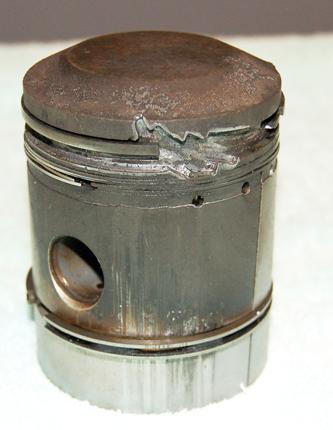
|
RM Hot Spot Systems Are they really needed? |
|
Both 1½ litre and 2½ litre cars are fitted with hot spot systems and tubes. It is also true to say that the rear two cylinders always run much hotter than the front two and that piston/bore/valve problems are much more common with the rear two cylinders. Cooling water is fed into the cylinder head by two ports on the nearside (left hand side) where baffles in the cylinder head deflect it so the about one third is directed downwards to cool the bores and two thirds are deflected across the exhaust valve seats. The hot water from the cylinder head then needs to find its way to the front of the cylinder head and out through the thermostat housing and into the radiator. In both 1½ and 2½ litre engines the hot spot conduit tubes obstruct the flow of water from the back to the front.
What purpose do these hot spots and their tubes serve? The books tell us that it is to ensure that the inlet manifold and carburettors warm up as quickly as possible. At the time our engines were designed (the basic design first appeared in 1927) antifreeze was not in common use and radiators would freeze up in cold weather at the bottom. It was common to blank off the lower half of the radiator to prevent this but this allowed cold air to stream across the inlet manifold and carburettors resulting in icing up. Today we use antifreeze if our cars live outside over night so frozen radiators are not a problem. Of course, warming up the water quickly in cold weather is still a good idea but it now makes more sense to block off the top half of the radiator instead. This makes no difference to how quickly the water warms up but it does stop the flow of cold air over the inlet manifold and carburettors thus letting them warm up from the normal engine heat. It also traps a layer of hot air at the top of the engine when the engine is turned off whereas blocking off the bottom of the radiator would have allowed the warm air to escape. So in today's conditions do we really need hot spot systems? |
|
Piston Broke. No, not the story of my life but the result of an overheated No.3 cylinder taken from my RMA shortly after purchase. The piston in No.4 cylinder was no better. Both bores were damaged too. |
|
The 1½ litre hot spot system is as close as the RMs get to the original Riley Nine system as it used the hot exhaust gases. These pass through 3 tubes, one big one through the cylinder head and two smaller ones through the cylinder block. On the exhaust side, all three tubes fit into the cast iron exhaust manifold while on the inlet side the large tube fits into the cast iron inlet manifold while the smaller ones fit into an aluminium elbow attached to the lower side of the inlet manifold. To ensure that the cooling water stays in the cylinder head and the cylinder block, steel conduit tubes are pressed into both the cylinder head the cylinder block through which the hot spot tubes pass. Unfortunately these tubes rust through and leak water. This arrangement also means that it is impossible to remove the cylinder head with the hot spot tubes in place. Usually they are well rusted into the exhaust manifold so removal of the inlet manifold and the elbow beneath it are the easier options. The Workshop Manual shows a special tool to remove the elbow although it very common to find that the elbow breaks up. It is the difficulty of removing the cylinder head that prompts many 1½ litre owners to delete the hot spot system. |
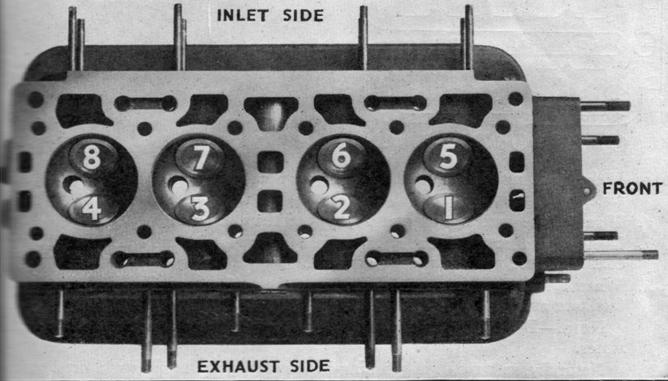
|
The conduit tube inside a 1½ litre cylinder head |


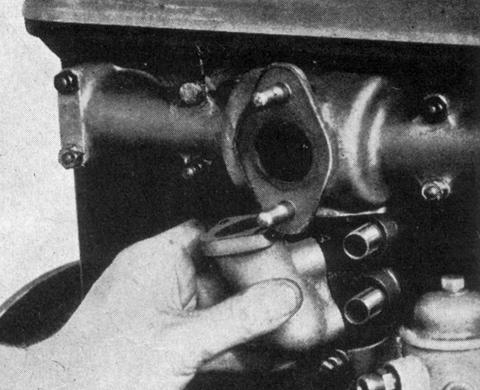
|
The aluminium elbow removed from the two hotspot tubes running through the conduit pipes in the block. The elbow is attached to the underside of the inlet manifold by two screws. |
|
Hot spot tubes running through the block |
|
If the hot spot system is deleted from the 1½ litre engine it is a good idea to remove the conduit tubes in the block and especially in cylinder head. Tapered plugs tapped into the holes left in the cylinder head and cylinder block will ensure that everything remains water tight. With the conduit tubes removed hot water will flow much easier from the back to the front of the engine. At a pinch the conduit tubes could be left in the cylinder block as they do not give too much of an obstruction but they should be sealed with tapered plugs as they will surely rust through and leak eventually. The plugs will retain the water inside the tube when this happens. Of course you don't really want rust inside the block as the fragments will eventually find their way around the system and into the radiator so removal of the tubes has to be the preferred option. |
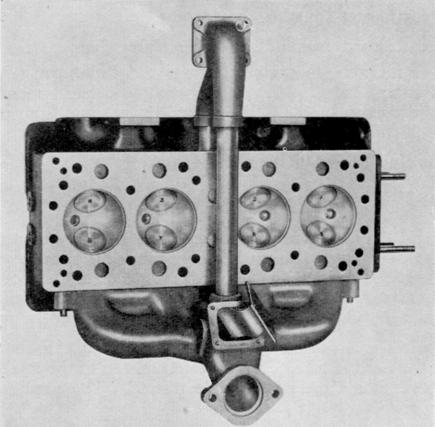
|
The Sixteen hot spot system |
|
To understand the 2½ litre hot spot system it helps to look at the pre-war Sixteen engine. The inlet manifold was also heated by exhaust gases and two tubes were used, one through the block and one through the head both passing through conduit tubes. In the RM engine these tubes are deleted and the inlet manifold is water heated. This is fine for the cylinder block however, in the cylinder head the conduit tube remains but now it ducts water into the inlet manifold through holes drilled in it. There seems little point in leaving this tube in place. It does little to direct hot water into or out of the inlet manifold and it certainly obstructs the flow of hot water from the back to the front of the cylinder head. |
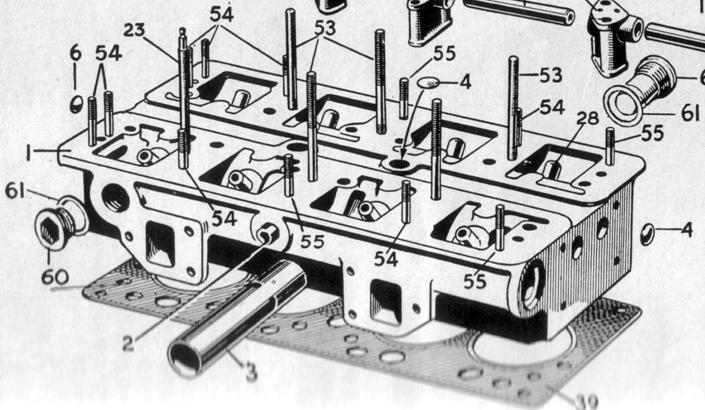
|
Hot Spot Tube |
|
Note the holes |

|
I have removed the hot spot system and the associated conduit tubes from both by 1½ litre RMs as well as from my 1939 Twelve. My Kestrel-Sprite never had them fitted. After many years (30+) I can say that in none of the cars have I suffered from carburettor icing with the top half of the radiator blocked off. Head removal is now quite simple and there are no conduit tubes to rust through and leak. I have not had any problems with over-hot rear cylinders either. My 2½ is still running with the original hot spot system although like most 2½ cars it runs a little hot (nowhere for the hot air to get out of the engine bay easily). Next time I need to dismantle the cylinder head I will remove the hot spot tube so that the rear cylinders can run cooler. |